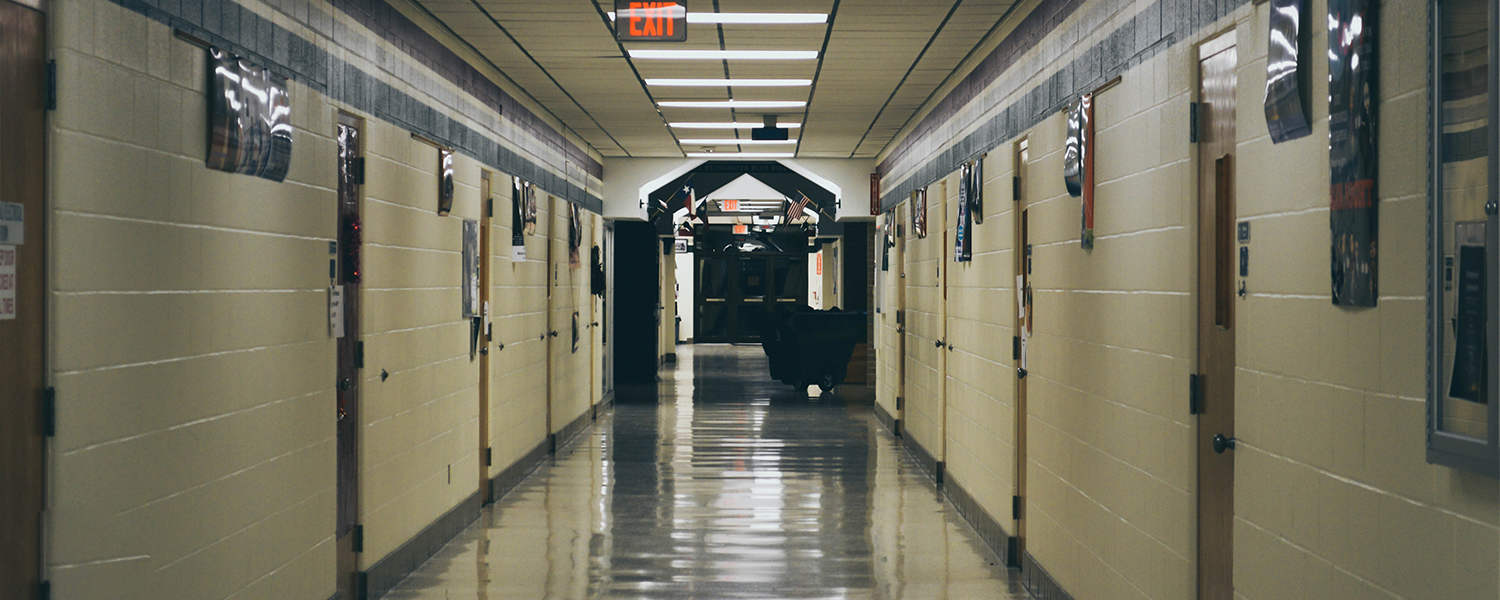Personal Injury News: Pick Of Last Month: July-2024
Settlement Fund Payouts for YDC Abuse Now Top $95 Million

A settlement fund established by New Hampshire lawmakers continues to pay out millions of dollars to address a growing number of credible abuse claims against staff at the state-run juvenile detention facility formerly known as the Youth Development Center (YDC).
From April through the end of June, 134 new claims were filed, bringing the total to 552, according to a newly released report by the settlement fund's administrator, former state Supreme Court Chief Justice. While the rate of new claims has slightly decreased from the previous quarter, which saw 159 new claims, the overall number remains significant.
Since the last quarterly report, the settlement fund has authorized monetary awards for 52 additional claimants, raising the total settlements to $95.6 million for 186 claimants so far. There are still 349 claims pending, with the majority of claimants alleging both physical and sexual abuse.
 Operations of the settlement fund are temporarily paused to allow administrators to adjust to recent changes designed to make the fund more appealing to the nearly 1,300 alleged victims who have filed civil lawsuits against the state. These changes, passed by the state Legislature last month, include raising the payment cap to $2.5 million and introducing new categories of compensable abuse. Additionally, the total pool of the settlement fund was increased to $160 million, up from the initial $100 million.
Operations of the settlement fund are temporarily paused to allow administrators to adjust to recent changes designed to make the fund more appealing to the nearly 1,300 alleged victims who have filed civil lawsuits against the state. These changes, passed by the state Legislature last month, include raising the payment cap to $2.5 million and introducing new categories of compensable abuse. Additionally, the total pool of the settlement fund was increased to $160 million, up from the initial $100 million.
Attorneys representing most of the alleged YDC victims support these changes and plan to recommend the settlement fund to their clients. The administrator expects a significant increase in the number of cases filed once the revised claim materials are available.
Notably, roughly half of all claims made with the YDC settlement fund were initially brought as lawsuits in Superior Court. Despite years of litigation, only one civil case involving YDC abuse has reached trial. In May, jurors awarded a plaintiff a historic $38 million for abuse he suffered while in state custody at YDC in the 1990s. However, the actual amount he will receive is still uncertain, as the state has filed a motion to limit the damages to $475,000, arguing that the jury identified only one incident of abuse.
The deadline to file claims with the YDC settlement fund is June 30, 2025.
Court Oks Dartmouth’s $33.75m Settlement in Aid Lawsuit

On July 20, a court approved Dartmouth College’s $33.75 million settlement in a class action lawsuit accusing the College and 16 other universities of violating antitrust laws and conspiring to limit financial aid for working and middle-class families.
The settlement, agreed upon by Dartmouth in February, was preliminarily approved by the court that same month. The lawsuit, initially filed in January 2022 by former students of the defendant universities, alleged that these institutions colluded on financial aid policies through the 568 Presidents Group, a consortium aimed at standardizing financial aid practices.
The plaintiffs accused Dartmouth and other universities of illegally working together to minimize financial aid, thus inflating the cost of attendance for students who relied on need-based financial aid.
Specifically, the lawsuit claimed that nine universities within the consortium, including Dartmouth, systematically favored wealthy students in the admissions process, undermining the need-blind policies that should have exempted them from antitrust laws under Section 568 of the Improving America’s Schools Act of 1994. This law allows institutions to confer on financial aid policies only if all participating schools are need-blind in their admissions processes.
Despite agreeing to the settlement, Dartmouth maintained that the plaintiffs’ claims lacked merit. According to a College spokesperson, Dartmouth chose to settle due to the potential time and cost associated with prolonged litigation, which they considered a distraction from the College’s educational mission. The spokesperson emphasized that Dartmouth continues to dispute the allegations, asserting that their financial aid packages are based solely on the individual needs and circumstances of their students.
After the lawsuit was filed, the 568 Presidents Group was dissolved, and Dartmouth, along with other defendant institutions, decided not to pursue the “Exemption Defense,” which was intended to shield them from antitrust claims based on their need-blind admissions policies. During a court hearing in July 2023, Dartmouth’s lawyer acknowledged that the College had considered donations in its admissions process, which further complicated its defense.
The court’s approval of Dartmouth’s settlement is part of a broader resolution involving several other universities. In addition to Dartmouth’s settlement, nine other institutions reached settlements totaling $284 million, including Brown University, the University of Chicago, Columbia University, Duke University, Emory University, Northwestern University, Rice University, Vanderbilt University, and Yale University. The court also approved $20,000 service awards for each of the named plaintiffs and granted their requests for expenses and attorneys’ fees.
 An economics professor at Dartmouth commented that the settlement is unlikely to have a significant impact on the College’s financial aid or admissions policies. He noted that the lawsuit had already prompted changes in behavior among the schools involved, leading them to stop coordinating on financial aid even before any settlement payments were made. He also reiterated Dartmouth’s commitment to providing financial aid based solely on individual student needs.
An economics professor at Dartmouth commented that the settlement is unlikely to have a significant impact on the College’s financial aid or admissions policies. He noted that the lawsuit had already prompted changes in behavior among the schools involved, leading them to stop coordinating on financial aid even before any settlement payments were made. He also reiterated Dartmouth’s commitment to providing financial aid based solely on individual student needs.
Settlement class members who wish to receive financial compensation must now file a claim, as reported by The Dartmouth in March 2024. Eligible claimants include U.S. citizens or permanent residents who were enrolled as undergraduates at Dartmouth from the fall term of 2004 through February 28, 2024, and who received some form of need-based financial aid. To qualify, these students must have had tuition, fees, room, or board that were not fully covered by financial aid or merit aid, excluding loans, in any undergraduate year.
According to the settlement proposal, the average claimant could receive about $2,000 if half of the eligible class members submit claims.
DOJ Announces Settlement in Hospice Fraud Allegations

Gentiva, the successor to Kindred at Home, has agreed to pay $19.428 million to settle allegations of submitting false claims for hospice services at multiple U.S. locations, including South Bend.
The U.S. Department of Justice announced that the settlement addresses claims that Kindred at Home and related entities knowingly submitted false claims and retained overpayments for hospice services provided to patients who were not terminally ill and, therefore, ineligible for hospice benefits under Medicare and other federal health care programs.
Gentiva’s hospice operations, based in Atlanta, include entities that previously operated under names such as Avalon, Kindred, SouthernCare, and SouthernCare New Beacon. The settlement involves specific hospice locations in South Bend, Indiana; Warwick, Rhode Island; Beaumont, Texas; Independence, Missouri; Demopolis, Alabama; Daphne, Alabama; Mobile, Alabama; and Youngstown, Ohio.
The Justice Department emphasized the importance of the Medicare hospice benefit for vulnerable patients and reaffirmed its commitment to preventing exploitation of the program for financial gain. Additionally, the settlement resolves allegations that these entities knowingly concealed or avoided their obligations to repay the government for improper hospice claims.
The case highlights the Justice Department’s ongoing efforts to protect the integrity of federal health care programs and ensure that hospice benefits are used appropriately.
City Council Oks $11.25m Settlement for Female Paramedics

Two women’s career aspirations with the Chicago Fire Department turned into a legal and financial battle after they faced discriminatory practices during a physical agility test at the fire academy.
Hired as paramedics, the women were subjected to a test designed to disproportionately disadvantage women, resulting in their dismissal from the academy.
The City Council has approved an $11.25 million settlement to compensate these women and ten others who were similarly affected. The test's demanding nature and its lack of relevance to paramedic duties led to severe physical injuries for four of the plaintiffs, with some suffering “career-ending” hip and back injuries. One plaintiff sustained a torn hip, according to their attorney.
The controversial test required candidates to hold 25-pound dumbbells in each hand while stepping on and off an 18-inch-high box for two minutes, timed to a 112-beats-per-minute metronome. This rigorous requirement was criticized as excessive and unrelated to actual paramedic tasks.
 As part of the settlement, five of the women were reinstated as paramedics by the department, which is now led by Chicago’s first female fire commissioner. These women received settlements ranging from $200,000 to $400,000, including retroactive seniority and pensions.
As part of the settlement, five of the women were reinstated as paramedics by the department, which is now led by Chicago’s first female fire commissioner. These women received settlements ranging from $200,000 to $400,000, including retroactive seniority and pensions.
The remaining six women, who are unable to return to their jobs, will receive between $475,000 and $1.3 million. Legal fees for this case total $4.25 million. One of the plaintiffs expressed relief but remained skeptical about lasting change, suggesting that further lawsuits may arise if discriminatory practices persist.
In addition to this settlement, the City Council approved several other settlements. These include $2.5 million for the estate of a man killed by a stolen car driver fleeing from police in April 2019, and $410,000 for the family of a man who was wrongfully arrested and beaten by a Chicago police officer in 2019, with the officer subsequently fired.
A $7.6 million settlement for a man wrongfully convicted of murder, whose conviction was overturned after a key witness admitted to false testimony, was rejected by the Finance Committee and may proceed to trial.
$2.05m Medical Malpractice Verdict Sparks Change in MN Law

In a case underscoring the significance of patient rights and medical accountability, a Duluth jury has awarded a $2.05 million verdict in a medical malpractice lawsuit.
The case centers on a man who experienced severe complications after a surgical team at Essentia - St. Mary's inadvertently left a laparotomy sponge inside him during a July 2021 procedure. This critical error resulted in a severe infection, disrupted his cancer treatment, and caused a loss of companionship for his wife. Initially, St. Mary's denied any responsibility, leading the couple to seek legal assistance.
However, they encountered a major obstacle: at that time, Minnesota was the only state without a “survivorship” law, which meant that if a person with a valid injury claim died before their trial, the claim would die with them. Given the plaintiff's stage 4 cancer diagnosis, many attorneys were hesitant to take on the case.
 In November, the hospital extended a settlement offer of $175,000, a figure that fell far short of reflecting the gravity of the negligence and its profound impact on the couple's lives. Despite this, the couple’s legal team persisted, bringing the case to trial. On July 3, 2024, nearly three years after the incident, the jury delivered a verdict of $2.05 million—more than ten times the amount of the settlement offer.
In November, the hospital extended a settlement offer of $175,000, a figure that fell far short of reflecting the gravity of the negligence and its profound impact on the couple's lives. Despite this, the couple’s legal team persisted, bringing the case to trial. On July 3, 2024, nearly three years after the incident, the jury delivered a verdict of $2.05 million—more than ten times the amount of the settlement offer.
This verdict not only compensates the couple but also emphasizes the critical need for medical accountability and robust patient rights. It highlights the power of perseverance and the importance of legislative change in ensuring justice for all patients, regardless of their prognosis.
Meriden Family Wins $15.4m for Fatal Medical Procedure Error

A jury in New Haven has awarded $15.4 million in damages to the family of a Meriden woman who died after a medical procedure, due to what her family’s attorney described as botched anesthesia care.
The 57-year-old woman passed away in 2017 after the medical team overseeing her anesthesia failed to recognize that she had suffered a cardiorespiratory collapse during a brief outpatient procedure at MidState Medical Center, according to the attorney.
The procedure, which lasted just 15 minutes, required anesthesia and was managed by the Meriden-Wallingford Anesthesia Group, the defendant in the case. Attempts to reach the group’s lawyers for comment were unsuccessful.
During the procedure, the woman experienced a cardiorespiratory collapse, a situation where the heart stops functioning. The family’s attorney stated that the medical team failed to properly recognize the emergency and did not take the necessary steps to resuscitate her. This included not performing chest compressions or calling a code, actions that are considered standard practice in such cases. As a result, the woman suffered catastrophic brain damage and spent the last 30 days of her life in the intensive care unit.
In a statement, her sons expressed their gratitude to the jury for the verdict, noting that their mother had always been a fighter. "Her seven grandkids, one of whom was born after her death, were the light of her life. We will all carry her memory and fighting spirit with us for the rest of our lives," they said.
Fire Ball Rides Shut down After Ohio State Fair Tragedy

Following a tragic incident at the Ohio State Fair, where a Fire Ball ride broke apart, killing one person and injuring seven others, Fire Ball rides worldwide were immediately shut down.
The ride's manufacturer, KMG, instructed operators to close all versions of the ride to allow for a thorough investigation. In a statement, the Netherlands-based company detailed the accident, revealing that a passenger-carrying gondola had detached from its supporting sweep arm, leading to the fatal accident.
Even before KMG’s directive, ride operators and government agencies across North America began voluntarily shutting down these rides. North American Midway Entertainment, which manages rides at various state fairs and amusement parks, announced that it would close all Fire Ball rides indefinitely as a precautionary safety measure.
The Indiana State Fair, in response to the Ohio tragedy, decided to remove the Fire Ball ride from its lineup of over 50 attractions ahead of its August 4 opening. In a statement, the fair expressed sympathy for those affected by the Ohio State Fair accident and emphasized the importance of safety during their event.
 KMG noted that the Fire Ball ride involved in the Ohio incident was built in the Netherlands in 1998 and is one of 48 such rides worldwide, with 11 operating in the United States. The accident claimed the life of an 18-year-old man from Columbus and left seven others injured, three critically. The man was thrown approximately 50 feet from the ride after it malfunctioned, and he died at the scene.
KMG noted that the Fire Ball ride involved in the Ohio incident was built in the Netherlands in 1998 and is one of 48 such rides worldwide, with 11 operating in the United States. The accident claimed the life of an 18-year-old man from Columbus and left seven others injured, three critically. The man was thrown approximately 50 feet from the ride after it malfunctioned, and he died at the scene.
In the wake of the incident, there has been a broader conversation about ride safety. A safety analyst and consultant based in Richmond, Virginia, criticized the widespread closures of amusement rides across the country, describing them as a "knee-jerk" reaction to the Ohio tragedy. He argued that such extreme measures might not be necessary, suggesting that the situation requires a more measured approach.
Inspection reports released by the Ohio Department of Agriculture indicated that state inspectors had not found any issues with the Fire Ball ride during their examination prior to the fair's opening. Four state inspectors had signed off on the ride’s safety, and the ride operators from Amusements of America, the vendor responsible for the ride, also reported no problems during its stint at the New Jersey State Fair from June 22 to July 9.
According to records, engineers hired by Amusements of America conducted a visual inspection of the ride's welds on October 25, 2016, and performed an ultrasound examination of the ride’s 24 gondola pins to check for defects. No defects were discovered during these inspections.
However, KMG had previously issued warnings in 2007 and 2009, advising operators to inspect for "structural fatigue cracking" in various parts of the ride, including the foam-padded shoulder restraints that secure passengers. The company recommended that these inspections be carried out "as soon as possible." The ride, also known by the name "Afterburner," was flagged in these service bulletins, which called for visual and magnetic testing to detect cracks. If cracks were found, the instructions required that they be ground out and repaired by a certified welding company.
The 2009 warning specifically noted that inspections had revealed faulty welds in the structural steel of some over-the-shoulder restraints. It was discovered that the original welds had been partially removed during the finishing process, weakening the weld area and leaving it susceptible to failure. KMG instructed ride owners to grind out these cracks and re-weld the restraints to ensure safety.
According to an amusement-ride safety consultant based in Newbury Park, California, service bulletins like these are routine and do not necessarily indicate that a ride is unsafe. He explained that as rides age, they naturally develop stress fatigue, which is why regular inspections, such as non-destructive testing (NDT) like visual inspections and ultrasounds, are essential. He emphasized that these rides are significant investments that require careful maintenance, not disposable items that are replaced annually. The consultant stressed that it is too early to determine the exact cause of the Ohio accident, noting that the ride had been maintained and inspected regularly.
 Despite the heightened concern following the Ohio incident, injuries from amusement rides are relatively rare. A 2013 report from the Center for Injury Research and Policy at Nationwide Children’s Hospital found that nearly 1,300 children are injured on mobile amusement rides each year.
Despite the heightened concern following the Ohio incident, injuries from amusement rides are relatively rare. A 2013 report from the Center for Injury Research and Policy at Nationwide Children’s Hospital found that nearly 1,300 children are injured on mobile amusement rides each year.
The report, which analyzed data from 1990 to 2010, recorded 27,065 injuries to children under 18 that required emergency room visits. However, over 98 percent of these injuries did not necessitate hospitalization, and the data did not include fatalities.
The center's manager of translational research pointed out the challenges in obtaining a clear picture of ride-related injuries, as there is no national reporting system for such incidents. This lack of centralized data makes it difficult to fully understand the scope of the issue and underscores the importance of thorough investigations following incidents like the one at the Ohio State Fair.
Washington Town Settles for $15M in Wrongful Death Case

A town in Washington state has agreed to pay $15 million to settle a wrongful-death lawsuit filed by the parents of a teenage boy who drowned during a town summer camp outing.
The incident occurred on July 15, 2022, at Florence Lake on Anderson Island, located southwest of Seattle, according to Pierce County Court records.
The 13-year-old boy had been left at the lake along with other teenagers by a camp employee who went to pick up another group of children and a co-worker from a nearby ferry station, court documents reveal.
The teenager who had never swum in open water before and was not provided with a life jacket, was underwater for about six minutes before bystanders noticed and rescued him. Despite CPR efforts, he was flown to a hospital where he died the same day.
One of the men walking on the beach at the time swam out, spotted DJ about 10 feet under the water, and pulled him to the surface. The boy’s parents subsequently sued the town of Steilacoom for negligence.
The town's administrator and attorney declined to comment on the settlement, citing ongoing litigation as final dismissal paperwork had not yet been filed.
In January, the town sought to dismiss the lawsuit, arguing that the parents had signed a waiver accepting risks, including injury or death, from participating in activities near water.
However, the family’s attorneys contended that the "generic release" form did not specify any risks related to open water activities. Additionally, they argued that camp employees violated the town's policy, which mandated that campers be supervised at all times during program hours.
The boy's parents plan to use the settlement money to establish a nonprofit organization focused on promoting aquatic safety at summer camps and to create scholarships in their son's name.
Honolulu Reaches Tentative $7M Settlement in Makaha Crash

Honolulu has tentatively agreed to a $7 million settlement with a 17-year-old boy who was left partially paralyzed following a high-speed police pursuit that ended in a crash in Makaha in 2021.
The settlement, reached last week, is still pending approval from the Honolulu City Council. The lawsuit, filed in 2021 when the boy was 14, is the final case to be settled among the crash victims. His lawyer confirmed that, pending the council's approval, he will drop a federal lawsuit accusing city officials of stalling the case.
Earlier this year, the City Council approved a $12.5 million settlement for the driver of the Honda Civic involved in the crash, marking the largest police-related settlement in Honolulu's history. The city had previously settled with four other passengers for $4.5 million last year, all of whom were critically injured in the crash.
 The plaintiff's lawyer expressed frustration with how the city handled his client's case, criticizing the lengthy delays and the lower settlement offer compared to others. Despite feeling the settlement amount was less than what the case deserved, he advised the victim's family to accept the offer to cover the boy's extensive medical care, which includes intensive physical and occupational therapy.
The plaintiff's lawyer expressed frustration with how the city handled his client's case, criticizing the lengthy delays and the lower settlement offer compared to others. Despite feeling the settlement amount was less than what the case deserved, he advised the victim's family to accept the offer to cover the boy's extensive medical care, which includes intensive physical and occupational therapy.
The lawyer also noted that the civil trial had been repeatedly delayed due to the ongoing criminal case involving the officers involved in the pursuit. He plans to continue pursuing legal action against the driver of the Honda Civic and his then-girlfriend, who owned the vehicle, as they are named as defendants in the original lawsuit.
A Honolulu city spokesperson declined to comment on the settlement until the City Council has reviewed the agreement. The accused driver, arrested on gun and drug charges in May, is currently being held at the Oahu Community Correctional Center on $1 million bail after failing to appear for a previous arraignment.
Colorado Officials Settle for $8.5m With Injured Woman

Local Colorado officials have reached an $8.5 million settlement with a woman who was injured in 2022 after being left handcuffed in a police SUV that was hit by a train.
The city of Fort Lupton and the town of Platteville agreed to the settlement, which will be split between the two municipalities and paid by their insurers, according to a statement from the Fort Lupton Police Department.
The woman, who was a suspect in a road rage incident, survived the September 2022 crash but sustained serious injuries, including nine broken ribs and a broken arm. The settlement was described as a voluntary agreement that acknowledges the severity of the situation and allows all parties to move forward.
The Fort Lupton police officer who placed the woman in the vehicle was found guilty of reckless endangerment and third-degree assault related to the crash. She was sentenced to 30 months of supervised probation and 100 hours of community service.
 On the day of the incident, the officer assisted in a traffic stop where the victim, suspected of brandishing a gun at another driver, was detained. The victim was placed in the patrol car of a Platteville police officer, who had parked the vehicle on railroad tracks. Police body and dash camera footage captured the woman’s screams for help as a train approached and collided with the car.
On the day of the incident, the officer assisted in a traffic stop where the victim, suspected of brandishing a gun at another driver, was detained. The victim was placed in the patrol car of a Platteville police officer, who had parked the vehicle on railroad tracks. Police body and dash camera footage captured the woman’s screams for help as a train approached and collided with the car.
During her trial, the officer argued that she failed to notice the location of the railroad tracks because she focused on the potential danger of the situation. She testified that her attention was divided between assessing the risk of approaching a suspect who might have a gun and her surroundings.

